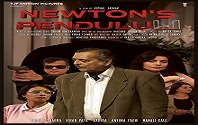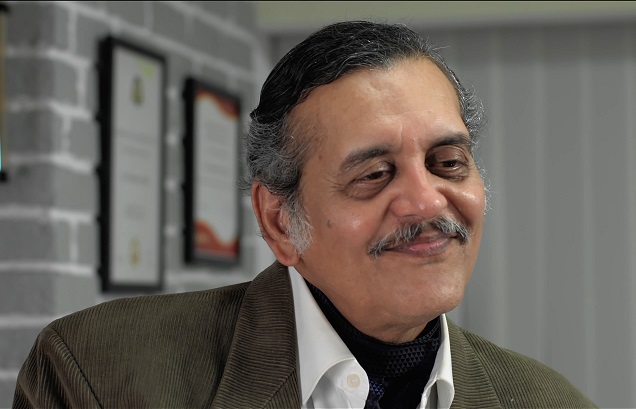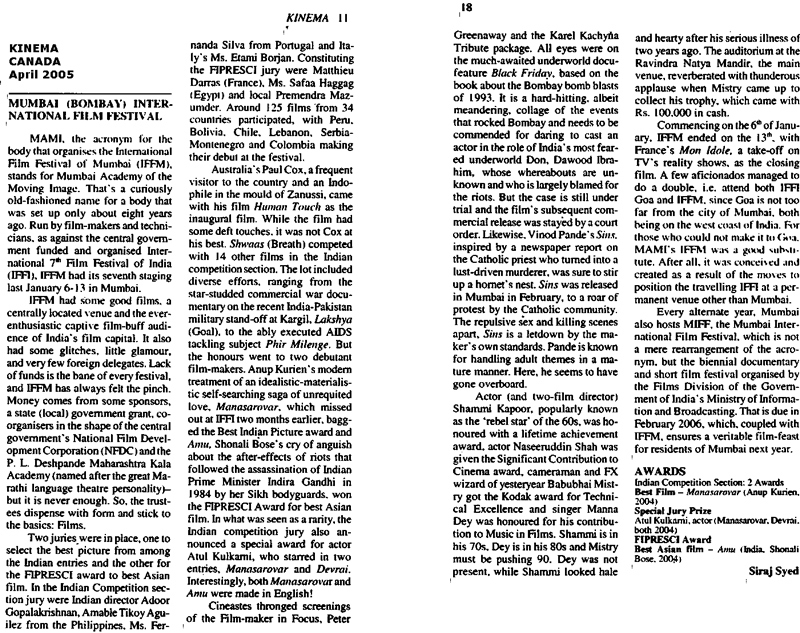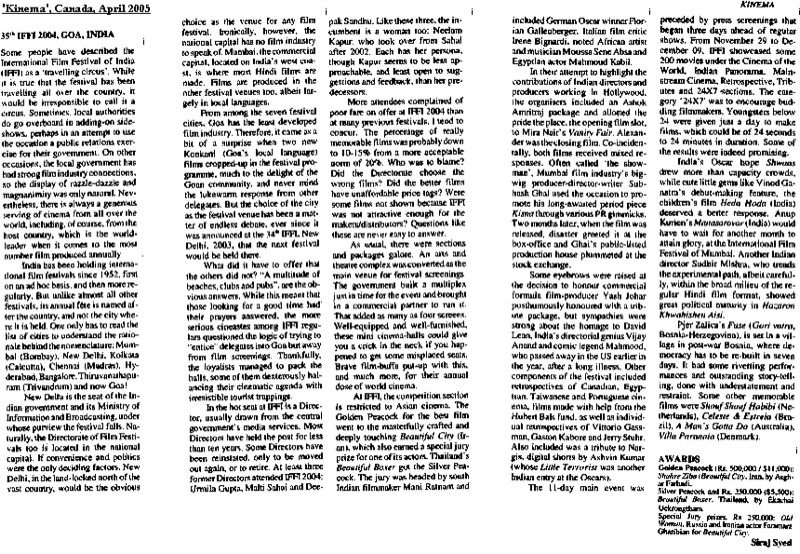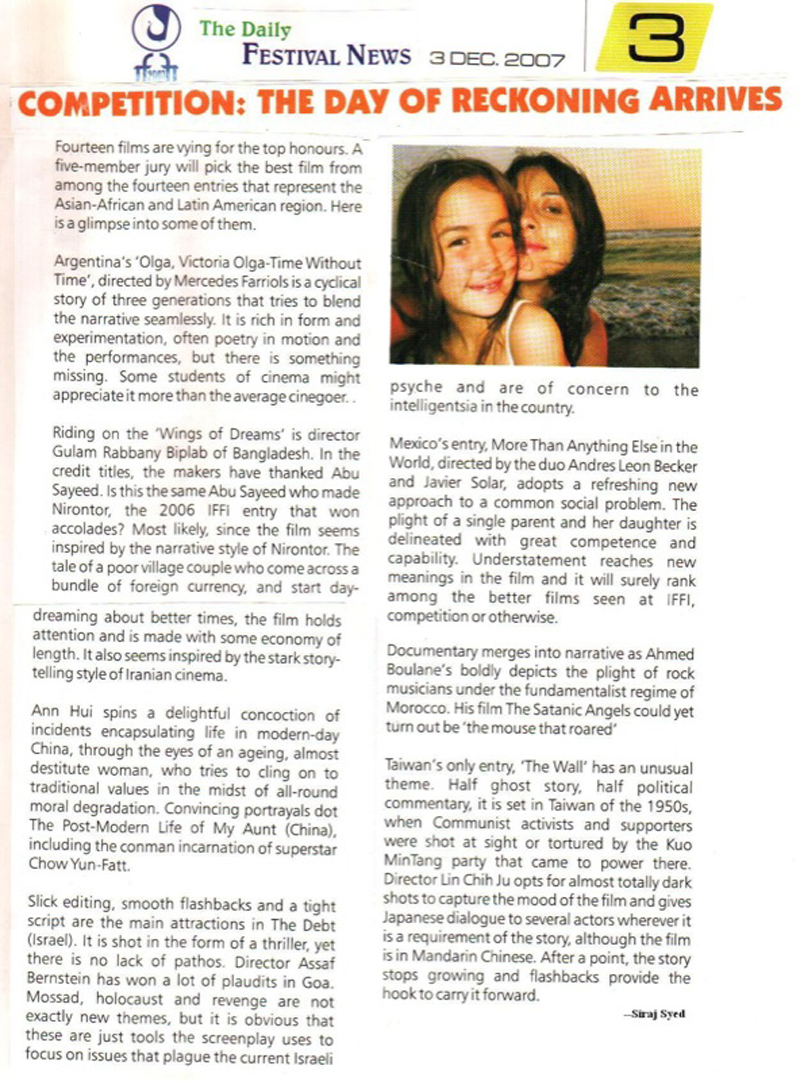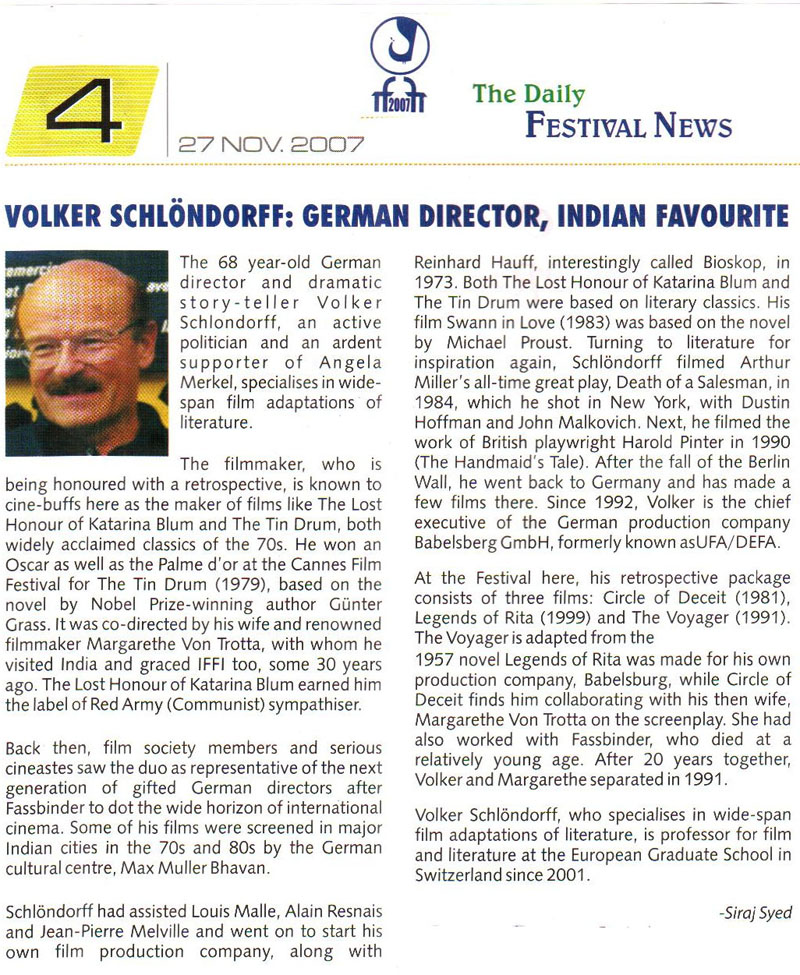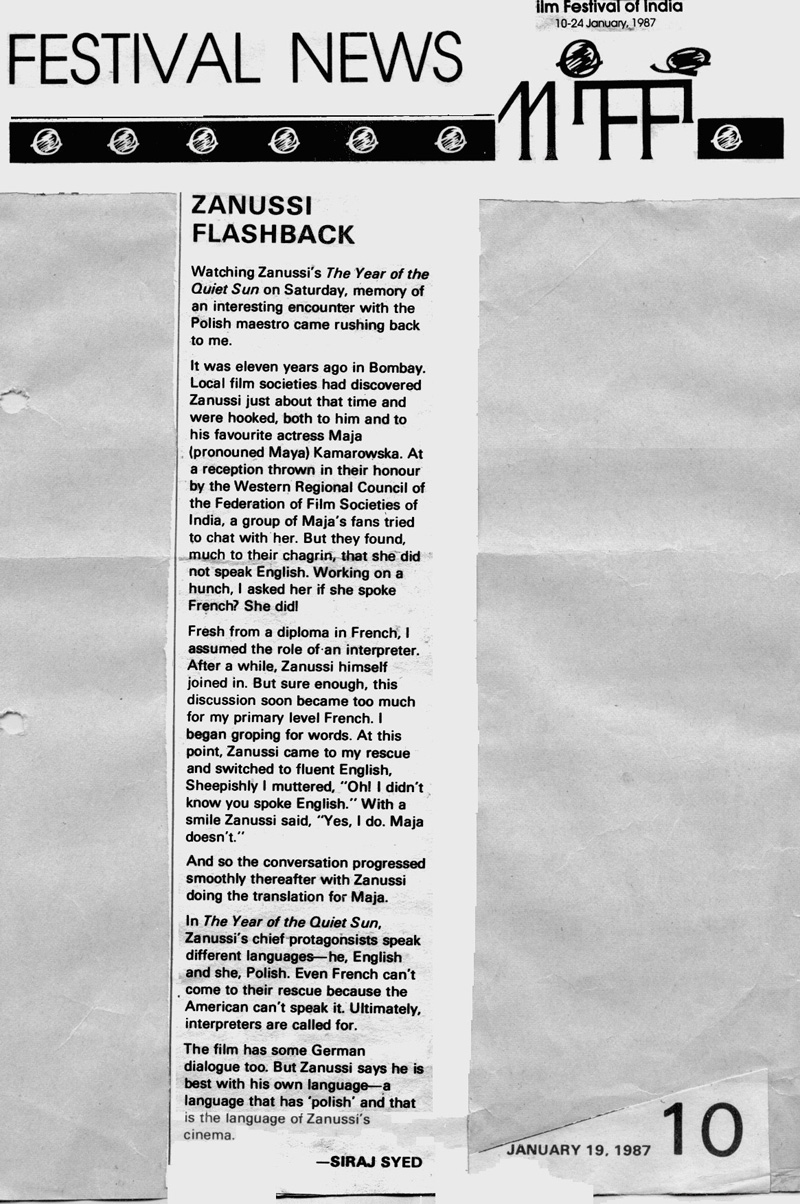|
|
||
|
Pro Tools
FILMFESTIVALS | 24/7 world wide coverageWelcome ! Enjoy the best of both worlds: Film & Festival News, exploring the best of the film festivals community. Launched in 1995, relentlessly connecting films to festivals, documenting and promoting festivals worldwide. Working on an upgrade soon. For collaboration, editorial contributions, or publicity, please send us an email here. User login |
Newton’s Pendulum: New tone in experimental terror curriculum
Newton’s Pendulum: New tone in experimental terror curriculum Time and again, film-makers, especially new film-makers, try to conduct experiments. They should know that by definition, an experimental film is not likely to have large audiences. Now here is a film that not only experiments, but it experiments with the psychotic thriller genre, and is a mere 27 minutes in duration. That reduces and restricts its appeal to select audiences. Moreover, it is titled Newton’s Pendulum, a device that was never used by Newton, to prove his laws of motion or otherwise. The experimentation is in the narrative, which, in spite of largely sticking to the linear format, with only one major deviation at the end, lends itself to audience participation and interpretation. If you overlook the flaws as margins of ‘experimental error’, something science students are taught, there is the germ of an idea, and a taut plot to have you on the edge and guessing most of the time. Newton’s Pendulum, otherwise known as Newton’s cradle is a desktop toy, and an educational tool that demonstrates the laws of conservation of energy and momentum. When one of the (four) balls is lifted and released, it strikes the subsequent stationary balls, and through a series of swift energy transfers, the last ball gets propelled outwards. Seen on the desk of every Fortune 500 CEO, psychotic villains, or protagonists in movies, this swinging ball setup relieves stress in some and inspires creativity in others, but for the majority of people, it is little more than a fascinating distraction. The device is named after Sir Isaac Newton and is also known as Newton’s balls. The principles demonstrated by such a cradle were first mentioned in a paper presented by John Wallis, Christopher Wren, and Christiaan Huygens, to the Royal Society, in the year 1662. Abbé Mariotte, a French physicist and priest, was the first to properly conduct and record experiments on pendulum balls. Newton mentioned Mariotte’s work in his book, the Principia, and that’s the entirety of contribution to the setup that now goes by his name. Now we come to Newton’s Pendulum, the film. Dr. Radhika is sleeping on a sofa, and she wakes up with a start. She mumbles that her boss, Dr. Vaidya, is retiring that day, that she is late, searches for something, finds it, changes from her shorts into formals, and leaves. At his hospital, Dr. Vaidya is being interviewed by a TV channel. Dr. Radhika enters his office. and has a word with him, he berates her for being habitually late and gives her some tasks to perform, after which she leaves his room. The lady anchor informs Dr. Vaidya that his interview will be aired that very evening. After the TV crew leaves, a tall man approaches Dr. Vaidya’s room. He knocks, and when asked to come in, enters the room. He tells Dr. Vaidya that he has something important to discuss, but Dr. Vaidya is busy making jottings in a notebook, and tells him that he does not have the time to talk to him, as today is his last day at work. After A Brief Case, this is the second collaboration of writer Abhishek Pandurangi and director Kushal Jadhav, and Jadhav’s fifth foray into direction. A Brief Case was co-written with Abhishek. Kushal edits all his films himself, and had incorporated copyright music in his last film. This time around, he has a regular composer’s services. Abhishek is a patents and trade-marks lawyer, with a patent penchant for writing films. Several things have swung the wrong way in Newton’s Pendulum, and Abhishek (story, screenplay and dialogue) needs to learn from these mistakes. The dialogue needed to be more impactful, rather than long-drawn, especially in the showcase scene, where the two lead actors clash head to head. He also makes the same mistake that all Punjabi inspired writers make: constructing sentences as ‘Aap ho’ (grammatically incorrect), instead of ‘Aap haen’ (correct). Dr. Vaidya is referred to by his surname, which is the norm among doctors, but Dr. Radhika is called Dr. Radhika (first-name). Also, the relationship between Shamaa and Dr. Radhika needed to be established, perhaps with a couple of more lines of dialogue. It is not explained where the man got the gun from. And Pandurangi gives you an ending that can trigger debate and challenge your grey cells, A home production of the Jadhavs, like A Brief Case, Newton’s Pendulum suffers on account of what must be budgetary constraints. The three main locations, namely the home of the two women, the corridors of the hospital and Dr. Vaidya’s room, are severely constricted. While typing on a manual typewriter, a woman wears large, pink-framed glasses, not the type one would associate with reading glasses. The match cut from water being poured out of a jug to water being poured out of a jug is a nice touch, but the other match cut, the more vital one, from a pool of blood to spilled red wine, is not as effective because the pool of blood is barely visible while the wine is seen in a large spread. More illustrations are not being given, because that would reveal the story, and would harm the interest of the film. It requires guts to pick such a subject from the cinema genres’ curriculum, and so the careful casting of the two main actors, the protagonist and the antagonist, is bang on. The same cannot be said of the two women in the flat. While the doctor and the antagonist match each other well, except on occasion where they are one or two notches off the required vocal pitch, the two women come across as relative strangers, rather than flat-mates. The end, though fleeting and well-executed, does not apply full closure. Perhaps a clearer denouement was needed, as in A Brief Case. To give Jadhav his due, a quick pace is maintained for the major part, and the film drags a bit only in the confrontation scene, which needed to be at least one whole minute shorter.
A casting coup, getting Shishir Sharma (Raazi, Uri, see picture) on board to play Dr. Vaidya, has paid dividends. Fluent in both English and Hindi, he looks and performs as Dr. Vaidya throughout, and only seems to be a bit uncomfortable when he is made to mouth a line or two of awkward dialogue, or made to match his adversary’s moves. Kiran Patil as the antagonist behaves as you would expect a man in his condition to behave. His peculiar speech pattern works in his favour. And if he does go over the top, he is still remains in character. Aadhya as Dr. Radhika has a minor role and passes muster. Anyuna as Shamaa has an even smaller role, but the plot pivots around her mysterious persona. Others in the cast are Manali Kale as the TV interviewer, and Mona Ovhal and Kumar Eshwar (also the Project Head!) as part of the TV crew. Director of Photography, Harshad Jadhav, has used a hand-held camera which jerks a little too often. Granted that the proceedings themselves are a jerky, or quirky, it nevertheless needed to be a little steadier. Perhaps this Jadhav should have played with angles a little more, to get the dramatic effect. Considering the location, trolley shots must have been ruled out, and zooms would have been an option they could do without, because of a very long, one-take, showcase scene. Lighting is generally bright and flat, and it does not appear that bounce lighting was used to get a wider range of graded illumination. In an attempt to keep it short, Jadhav, the editor, reduces two or three shots to just 4-8 frames, failing to register, like the gift that Dr. Vaidya opens. Music and Background Score by Sriram Ravishankar is an asset, and a vital element in a psychotic thriller. This hugely talented, and huge, man has dabbled in several things before answering the call of his destiny and adopting music as his craft. Art Director Rajita Sapte came in at the last minute and had little to play with. It was a nice idea to decorate the wall in Dr. Vaidya’s room with various certificates, citations and paintings, however, they all appear too crowded and very close to each other. Other members of the team include Head Stylist Naina Pareek Sanghvi, VFX Artist Aditya Tambe, Project Head Kumar Eshwar, Production Manager Mehmood Khan, Film Colourist Nilesh Pote, Sound Mixing and Designer Rajeesh K. Ramanan (competent), Foley and Sound Effects by Abin Paul, Sound Recording by Om and Make-Up Artist, Vasu. Vasu deserves compliments for the hair styling of the antagonist. Newton’s Pendulum is produced by the Senior Mr. Jadhav, Harishchandra. There are many merits in Newton’s Pendulum, and as many demerits. From A Brief Case to Newton’s Pendulum, there has not been much growth in the technique of Kushal Jadhav, except for the fact that this one is a more challenging format, as conceived by Pandurangi, and he has an actor of the calibre of Shishir Sharma opposite the A Brief Case lead actor, Kiran Patil. Film-making is a part-time profession for Jadhav, and he will have to decide sooner rather than later whether he wants to take his “action” and “cut” duties more seriously than his corporate job. For encouragement, Jadhav has received a Best Director award at the Rajasthan International Film Festival, held in Jodhpur last month. Newton’s Pendulum does strike a new tone, and set a new cornerstone. It is up to Abhishek Pandurangi and Kushal Jadhav to build on this foundation. Rating: ** ½ 13.04.2022 | Siraj Syed's blog Cat. : 1921) A Brief Case Abhishek Pandurangi Abin Paul Aditya Tambe Anyuna best director Harishchandra Jadhav Harshad Jadhav Kiran Patil Kumar Eshwar Kushal Jadhav Manali Kale Mehmood Khan Mona Ovhal Naina Pareek Sanghvi Newton's balls Newton's cradle Nilesh Pote Om psychotic thriller Rajasthan International Film Festival Rajeesh K. Ramanan Rajita Sapte Shishir Sharma Sir Isaac Newton Six Characters in Search of an Author (Luigi Pirandello Sriram Ravishankar Suspense Vasu
|
LinksThe Bulletin Board > The Bulletin Board Blog Following News Interview with EFM (Berlin) Director
Interview with IFTA Chairman (AFM)
Interview with Cannes Marche du Film Director
Filmfestivals.com dailies live coverage from > Live from India
Useful links for the indies: > Big files transfer
+ SUBSCRIBE to the weekly Newsletter Deals+ Special offers and discounts from filmfestivals.com Selected fun offers
> Bonus Casino
User imagesAbout Siraj Syed Syed Siraj Syed Siraj (Siraj Associates) Siraj Syed is a film-critic since 1970 and a Former President of the Freelance Film Journalists' Combine of India.He is the India Correspondent of FilmFestivals.com and a member of FIPRESCI, the international Federation of Film Critics, Munich, GermanySiraj Syed has contributed over 1,015 articles on cinema, international film festivals, conventions, exhibitions, etc., most recently, at IFFI (Goa), MIFF (Mumbai), MFF/MAMI (Mumbai) and CommunicAsia (Singapore). He often edits film festival daily bulletins.He is also an actor and a dubbing artiste. Further, he has been teaching media, acting and dubbing at over 30 institutes in India and Singapore, since 1984.View my profile Send me a message The EditorUser contributions |

















